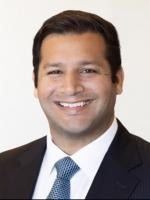Courts around the country continue to disagree on the causation standard to be applied in False Claims Act cases based on alleged Anti-Kickback Statute violations. Two recent federal district court decisions out of the District of Massachusetts add to differing conclusions on what the causation standard should be, i.e., “but-for,” “exposure,” or some other, less demanding standard. In United States v. Regeneron Pharms., Inc., No. 20-11217-FDS, 2023 WL 7016900 (D. Mass. Oct. 25, 2023), the district court adopted the Sixth and Eighth Circuits’ “but for” causation standard. See United States ex rel. Martin v. Hathaway, 63 F.4th 1043 (6th Cir. 2023), and United States ex rel. Cairns v. D.S. Med. LLC, 42 F.4th 828 (8th Cir. 2022). In United States v. Teva Pharmaceuticals USA, Inc., No. 20-11548-NMG, 2023 WL 4565105 (D. Mass. July 14, 2023), a different judge of the same court adopted the Third Circuit’s “exposure” standard. See United States ex rel. Greenfield v. Medco Health Sols., Inc., 880 F.3d 89, 96-98 (3d Cir. 2018). Both judges certified their decisions for immediate appeal to the United States Court of Appeals for the First Circuit. In short, anticipate the First Circuit adding its view to the mix soon.
The False Claims Act imposes civil liability for “knowingly present[ing], or caus[ing] to be presented, a false or fraudulent claim [to the government] for payment or approval.” 31 U.S.C. § 3729(a)(1)(A). The Anti-Kickback Statute, meanwhile, prohibits medical providers from making referrals “in return for” “remuneration.” 42 U.S.C. § 1320a-7b(b)(1)(A). The False Claims Act covers many types of false claims, including claims that include “items or services resulting from a violation” of the Anti-Kickback Statute. Id. § 1320a-7b(g) (emphasis added). The legal debate referenced above is ultimately a debate about the meaning of the “resulting from” language in this portion of the False Claims Act.
In Regeneron, the United States filed suit against the manufacturer of the drug Eylea, alleging that the manufacturer paid millions of dollars to a charity to subsidize patient copays. The government’s theory was that the payment of the copays violated the Anti-Kickback Statute, and that patients’ Eylea claims to Medicare included items “resulting from” the alleged violation. The parties filed competing motions for summary judgment, arguing over, among other items, the causation standard to be applied in False Claims Act cases premised on Anti-Kickback Statute violations.
The government argued that the court should adopt the “exposure” theory of causation delineated in the Third Circuit’s Greenfield decision. Greenfield held that once the government proves a violation of the Anti-Kickback Statute, the government may establish causation under the False Claims Act by proving that a (1) “a particular patient [was] exposed to an illegal recommendation or referral” and (2) “a provider submit[ted] a claim for reimbursement pertaining to that patient.” Greenfield, 880 F.3d at 100. In contrast, the manufacturer argued that a “but-for” causation standard should apply, meaning that the government bears the burden of proving that “but for” the payment to the charity to subsidize co-pays, the claims would not have been made.
Unlike the but-for standard, the exposure standard requires the plaintiff to prove only “a link between the alleged kickbacks and the medical care received.” Greenfield, 880 F.3d 100. Under this standard, the Greenfield court held that it was not necessary for the plaintiff to “show that a kickback directly influenced a patient’s decision to use a particular provider”; instead, it must demonstrate “some connection between a kickback and a subsequent reimbursement claim.” Id. at 97, 100.
The Regeneron court ultimately held that the government must demonstrate “but-for” causation for False Claims Act claims based on the Anti-Kickback Statute. The court agreed with the manufacturer that “adoption by Congress of the ‘resulting from’ language in the statute requires a finding that the appropriate standard is but-for causation.” 2023 WL 7016900, at *12. The court reasoned that the competing “exposure” standard adopted in Greenfield “is fraught with problems.” Id. In the court’s view, that standard “is divorced from the actual language of the statute and from basic principles of statutory interpretation.” Id. “It is likewise disconnected from long-standing principles of causation.” Id. “As a result,” the Regeneron court explained, the exposure standard “is unclear and its application in specific factual contexts is uncertain.” Id. Accordingly, the court rejected the exposure standard applied in the Third Circuit and aligned itself with the Sixth and Eighth Circuits, which apply the “but-for” standard.
The appropriate causation standard in False Claims Act cases based on alleged Anti-Kickback Statute violations is important given the much higher bar that the government must clear under the “but for” standard as opposed to the exposure standard. And the split among circuits, including within at least one circuit (as evidenced by these district court decisions), only adds to the importance of the issue. The continuing split ripens the stage for a ruling by the First Circuit, while increasing the likelihood of the U.S. Supreme Court eventually taking on and settling the issue.





 />i
/>i

